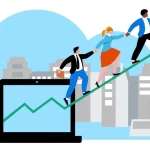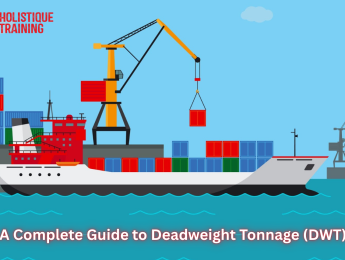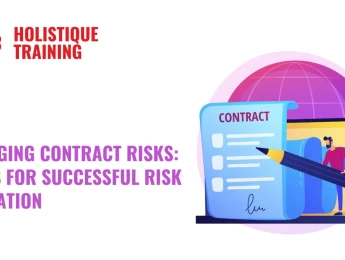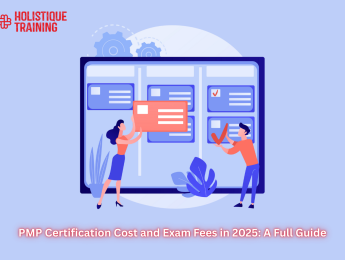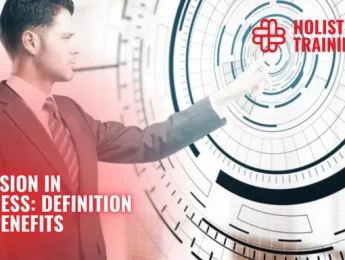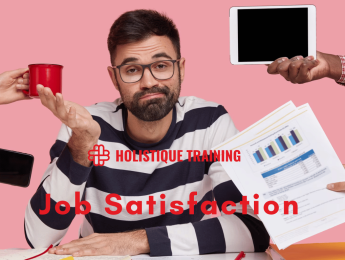- Table of Contents
- Introduction
- What Is Big Data?
- Volume
- Velocity
- Variety
- 10 Ways Big Data Is Changing Business
- 1. Data-Driven Decision Making
- 2. Improved Customer Insights
- 3. Personalised Marketing
- 4. Enhanced Risk Management
- 5. Supply Chain Optimisation
- 6. Predictive Maintenance
- 7. Fraud Detection
- 8. Healthcare Advancements
- 9. Energy Efficiency
- 10. Competitive Advantage
- How Big Data Is Used Across Different Industries
- Retail
- Finance
- Healthcare
- Manufacturing
- Transportation and Logistics
- Media and Entertainment
- Energy
- Agriculture
- Challenges of Using Big Data in Business
- Data Privacy and Security
- Data Quality
- Data Integration
- Talent Shortage
- Costs
- Scalability
- Ethical Considerations
- How to Get Started with Big Data
- 1. Define Clear Objectives
- 2. Identify Relevant Data Sources
- 3. Choose the Right Tools and Technologies
- 4. Data Processing and Analysis
- 5. Data Visualisation
- 6. Implement Security Measures
- 7. Scalability Planning
- 8. Invest in Training
- 9. Establish a Data-Driven & Collaborative Culture
- 10. Iterate and Innovate
- Do’s and Don’ts of Utilising Big Data in Your Organisation
- Do’s:
- Don’ts:
- Conclusion
Introduction
We live in a world awash with data. Every click, every transaction, and every interaction generates a digital footprint. This deluge of information, often referred to as 'Big Data,' is transforming the way businesses operate. In this blog post, we will explore what Big Data is, the myriad ways it is changing the face of business, its applications across various industries, the challenges associated with its utilisation, and how organisations can embark on their Big Data journey. We will also delve into the essential do's and don'ts for harnessing the power of Big Data in your organisation.
What Is Big Data?
Big Data, as the name suggests, refers to an immense volume of structured and unstructured data that inundates businesses on a day-to-day basis. It's not merely a quantitative term, denoting large datasets, but it encapsulates a trio of characteristics that distinguish it from traditional data processing methods: Volume, Velocity, and Variety.
Volume
The sheer volume of data generated every moment is staggering. Think about the multitude of sources - social media interactions, online transactions, sensor data, and more. The size of this data is beyond the processing capabilities of traditional database systems. To put this into perspective, consider the fact that Facebook handles billions of photos being uploaded daily, and the Large Hadron Collider in CERN produces about 40 terabytes of data every second during its experiments. Big Data technologies are designed to manage and process such colossal volumes efficiently.
Velocity
Data in the Big Data realm comes at us fast and furiously. The speed at which data is generated, collected, and processed is unprecedented. Tweets, online purchases, sensor readings, and GPS signals are being generated in real-time. For businesses, this real-time aspect is crucial. For example, e-commerce websites need to process millions of transactions per second during peak shopping hours. This rapid influx of data requires advanced algorithms and processing capabilities that can keep up with the speed of data generation.
Variety
Big Data isn’t confined to structured data alone. While structured data fits neatly into traditional databases and includes information like names, addresses, and phone numbers, unstructured and semi-structured data forms a significant portion of Big Data. Unstructured data includes text data from social media posts, emails, customer reviews, and multimedia content such as images and videos. Semi-structured data, on the other hand, includes data formats like XML and JSON, common in web applications. The challenge lies in analysing this diverse range of data formats to extract meaningful insights. Businesses need to integrate, clean, and transform these varied data types to draw accurate conclusions.
Moreover, Big Data is not just about these three Vs anymore; it has expanded to include other dimensions, like Veracity (referring to the reliability of the data) and Value (the ability to turn raw data into value). Veracity ensures that the data being collected is accurate and trustworthy, which is crucial for making informed decisions. Value emphasises the importance of extracting actionable insights from the data. It's not just about having the data; it's about deriving value from it, be it in the form of improved customer experiences, cost savings, or strategic business decisions.
In essence, Big Data is a multifaceted concept that encompasses vast amounts of data generated at an unprecedented speed and in diverse formats. It's not just the quantity of data that matters but also the speed at which it's processed, the varied formats it comes in, its reliability, and the actionable insights that can be derived from it. Understanding these intricacies is fundamental for any organisation aiming to harness the power of Big Data effectively.
10 Ways Big Data Is Changing Business
Now that we have a better understanding of Big Data, let's explore how it is reshaping the business landscape.
1. Data-Driven Decision Making
In the era of Big Data, businesses no longer rely on gut feelings or limited datasets for decision-making. Data-driven decision making is now a fundamental principle. By analysing vast amounts of data, businesses can identify patterns and trends, allowing them to make informed choices. Whether it’s optimising marketing strategies, predicting market demand, or enhancing customer experiences, data-driven decisions are at the core of modern business strategies.
2. Improved Customer Insights
Understanding customer behaviour is critical for businesses. Big Data analytics enable companies to gain profound insights into their customers' preferences, behaviours, and feedback. By analysing social media interactions, online transactions, and customer service interactions, businesses can create detailed customer profiles. This deep understanding allows for personalised marketing, targeted product development, and improved customer engagement, ultimately leading to enhanced customer satisfaction and loyalty.
3. Personalised Marketing
Traditional mass marketing strategies are becoming obsolete in the face of Big Data. Companies can now create highly targeted and personalised marketing campaigns. By analysing customer data, businesses can tailor their offerings to specific customer segments. Personalised marketing leads to higher conversion rates, increased customer engagement, and, ultimately, greater revenue. From product recommendations to personalised email marketing, Big Data enables businesses to deliver content that resonates with individual customers.
4. Enhanced Risk Management
In the financial sector, managing risks is a primary concern. Big Data analytics allow financial institutions to assess risks with unparalleled accuracy. By analysing historical and real-time data, companies can predict market trends, assess credit risks, and detect fraudulent activities promptly. This predictive analysis empowers businesses to make proactive decisions, mitigating potential risks and ensuring financial stability.
5. Supply Chain Optimisation
Big Data is transforming supply chain management. Companies can now monitor the entire supply chain in real-time. Sensors and RFID tags track products from manufacturing to delivery, providing valuable data on their journey. Advanced analytics optimise inventory levels, predict demand patterns, and streamline logistics. This results in reduced costs, minimised waste, and a more agile supply chain capable of adapting to market fluctuations.
6. Predictive Maintenance
For industries reliant on machinery, such as manufacturing and transportation, predictive maintenance is a game-changer. Big Data analytics, coupled with IoT sensors, enable predictive maintenance models. These models anticipate when equipment is likely to fail, allowing businesses to perform maintenance before breakdowns occur. This proactive approach reduces downtime, extends equipment lifespan, and prevents costly repairs, ultimately increasing operational efficiency.
7. Fraud Detection
Fraudulent activities pose a significant threat to businesses. Big Data analytics are instrumental in fraud detection and prevention. By analysing transaction patterns, user behaviours, and historical data, financial institutions and e-commerce platforms can detect anomalies indicative of fraud. Machine learning algorithms can identify these patterns in real-time, allowing businesses to block suspicious transactions and prevent financial losses.
8. Healthcare Advancements
In the healthcare sector, Big Data is revolutionising patient care, drug discovery, and operational efficiency. By analysing patient records, medical images, and genomic data, healthcare providers can personalise treatments and improve patient outcomes. Big Data analytics facilitate clinical research by processing vast datasets, leading to the discovery of new drugs and therapies. Additionally, wearable devices and health apps generate real-time patient data, providing valuable insights for healthcare professionals.
9. Energy Efficiency
Big Data plays a pivotal role in optimising energy consumption and promoting sustainability. In the energy sector, smart grids leverage Big Data analytics to monitor energy production and distribution in real-time. By analysing consumption patterns, energy providers can balance supply and demand efficiently. Moreover, IoT sensors and data analytics are used in industries like manufacturing to optimise energy usage, reduce waste, and lower operational costs.
10. Competitive Advantage
Companies that effectively harness Big Data gain a significant competitive edge. By analysing market trends, consumer sentiment, and competitor activities, businesses can adapt their strategies in real-time. Big Data enables businesses to stay ahead of market shifts, innovate rapidly, and meet customer demands more effectively. This competitive advantage is invaluable in today's fast-paced business landscape.
In short, the transformative power of Big Data is evident across various sectors. Fromdata-driven decision making to personalised marketing and predictive analytics, businesses are leveraging Big Data to drive innovation, enhance customer experiences, and gain a competitive edge. Embracing the potential of Big Data is no longer an option but a necessity for businesses looking to thrive in the digital age.
How Big Data Is Used Across Different Industries
Big Data isn't limited to one sector. It's a versatile tool that's transforming businesses across various industries:
Retail
In the retail industry, Big Data is a goldmine for understanding customer behaviour. Retailers analyse customer data, including purchase history, browsing habits, and social media interactions, to personalise marketing efforts. Predictive analytics help forecast demand, optimise inventory, and enhance supply chain management. Real-time data analytics enable dynamic pricing strategies, ensuring competitive pricing and maximising profits.
Finance
The finance sector heavily relies on Big Data for fraud detection, risk management, and algorithmic trading. By analysing transaction patterns and customer behaviour, financial institutions can detect unusual activities indicative of fraud. Big Data analytics models assess credit risks more accurately, enabling informed lending decisions. Algorithmic trading algorithms analyse vast datasets in real-time to execute trades at optimal moments, maximising returns for investors.
Healthcare
In healthcare, Big Data is revolutionising patient care and medical research. Electronic Health Records (EHR) store patient data, making it accessible for analysis. Big Data analytics assist in disease prediction, diagnosis, and personalised treatment plans. Genomic data analysis aids in identifying genetic markers for diseases, facilitating targeted therapies. Real-time data from wearable devices and sensors enable remote patient monitoring, improving patient outcomes and reducing healthcare costs. And this is just the beginning, as it is expected that Big Data analytics for the healthcare sector could reach a whopping $79.23 Billion by 2028, according to Exploding Topics.
Manufacturing
Big Data is transforming manufacturing processes through predictive maintenance and quality control. Sensors on manufacturing equipment collect real-time data, predicting equipment failures before they occur. This minimises downtime and reduces maintenance costs. Big Data analytics analyse production data to optimise manufacturing processes, ensuring quality standards are met. Predictive analytics also enhance demand forecasting, enabling efficient inventory management.
Transportation and Logistics
In the transportation and logistics industry, Big Data optimises routes, reduces fuel consumption, and enhances overall efficiency. GPS data and traffic patterns analysis enable real-time route optimisation for delivery vehicles, reducing transit time and fuel usage. Predictive analytics help logistics companies anticipate demand fluctuations and optimise inventory levels, minimising storage costs. Additionally, IoT sensors monitor vehicle health, enabling predictive maintenance and minimising breakdowns.
Media and Entertainment
Big Data is shaping content creation, distribution, and user engagement in the media and entertainment sector. Streaming platforms use viewership data to recommend personalised content, increasing user engagement and retention. Social media sentiment analysis gauges audience reactions, informing content producers about public opinion. Box office analytics predict movie performance, guiding marketing strategies. Advertisers use customer data to deliver targeted ads, maximising conversion rates.
Table 1: Big data applications across different industries & its benefits
Industry | Big Data Application | Impact |
Healthcare | Personalised patient treatment plans | Improved patient outcomes and satisfaction |
Retail | Predictive analytics for customer behaviour | Enhanced sales, targeted marketing, and loyalty |
Finance | Fraud detection and risk assessment | Reduced financial losses and improved security |
Manufacturing | Predictive maintenance for machinery | Minimised downtime and increased efficiency |
Transportation | Route optimisation and demand forecasting | Reduced costs, faster deliveries, and satisfied customers |
Energy
In the energy sector, Big Data optimises energy production, distribution, and consumption. Smart grids use real-time data to balance energy supply and demand, preventing grid overload. Predictive analytics optimise maintenance schedules for power plants and equipment, reducing downtime. Big Data analytics also assist in renewable energy integration, ensuring efficient utilisation of solar and wind energy. Energy providers analyse consumption patterns to offer personalised energy-saving tips to consumers, promoting sustainable practices.
Agriculture
Big Data is revolutionising agriculture through precision farming techniques. Sensors collect data on soil quality, weather conditions, and crop health. Big Data analytics process this information to optimise irrigation, fertilisation, and pest control, maximising crop yields. Predictive analytics forecast weather patterns, enabling farmers to make informed decisions about planting and harvesting. This data-driven approach improves agricultural productivity and sustainability.
In essence, Big Data's applications are vast and diverse, transforming industries by providing valuable insights, optimising processes, and enhancing customer experiences. The ability to harness and analyse large datasets is no longer a luxury but a necessity for businesses and organisations aiming to stay competitive and innovative in the ever-evolving global landscape.
Challenges of Using Big Data in Business
While Big Data holds enormous potential, it comes with its own set of challenges. Understanding and overcoming these challenges is crucial for organisations looking to harness the benefits of Big Data effectively:
Data Privacy and Security
One of the most significant challenges associated with Big Data is ensuring data privacy and security. With the vast amounts of sensitive information being collected and analysed, businesses face the risk of data breaches and unauthorised access. Strict compliance with data protection regulations such as GDPR (General Data Protection Regulation) and HIPAA (Health Insurance Portability and Accountability Act) is essential. Implementing robust encryption, access controls, and regular security audits are vital to safeguarding customer data.
Data Quality
The quality of data is paramount. Inaccurate or incomplete data can lead to flawed analysis and erroneous decision-making. Ensuring data accuracy, consistency, and reliability is an ongoing challenge. Data cleansing techniques, including data validation and deduplication, are crucial to maintaining high-quality data. Regularly auditing and cleaning datasets ensure that the insights drawn from Big Data analytics are trustworthy and reliable.
Data Integration
Many organisations have data dispersed across various systems and formats. Integrating this diverse data into a cohesive and understandable format for analysis can be complex. Inconsistent data formats, naming conventions, and data structures pose challenges during the integration process. Data integration tools and technologies are essential to harmonise data from disparate sources. A unified view of data enables comprehensive analysis and accurate decision-making.
Talent Shortage
The demand for skilled data scientists, analysts, and engineers far exceeds the supply. Finding and retaining talent proficient in Big Data technologies and analytics is a significant challenge for businesses. The expertise to design and implement sophisticated algorithms for data analysis is rare. Investing in employee training, collaborating with educational institutions, and fostering a culture of continuous learning within the organisation are strategies to address this talent shortage.
Costs
Implementing and maintaining Big Data infrastructure and tools can be expensive. The initial investment in hardware, software, and specialised personnel is substantial. Small and medium-sized businesses, in particular, may find it challenging to allocate budgetary resources for Big Data initiatives. Cloud-based solutions and outsourcing data analytics services are cost-effective alternatives for businesses with budget constraints.
Scalability
With more than60% of corporate data residing in cloud storage solutions, ensuring that the infrastructure and tools can scale accordingly is a critical challenge. Scalability issues can hinder the ability to process and analyse large datasets efficiently. Businesses must plan for scalability from the outset, choosing technologies that can handle increasing volumes of data without compromising performance. Scalable cloud-based solutions provide flexibility and can adapt to changing data requirements.
Ethical Considerations
Big Data analytics raise ethical concerns, particularly regarding consumer privacy and consent. Analysing vast amounts of personal data to understand customer behaviour can be perceived as intrusive. Striking a balance between deriving valuable insights from customer data and respecting individual privacy rights is a delicate challenge. Transparency in data collection practices, obtaining informed consent, and ensuring data anonymisation are essential ethical considerations in Big Data applications.
Addressing these challenges requires a strategic approach, robust governance frameworks, and a commitment to ethical practices. Organisations must invest in technology, talent, and security measures while adhering to regulatory guidelines. Overcoming these challenges allows businesses to harness the full potential of Big Data, driving innovation and gaining a competitive edge in the digital landscape.
How to Get Started with Big Data
Getting started with Big Data may seem daunting, but it's a journey worth embarking on. Here are the essential steps to begin:
1. Define Clear Objectives
Begin by clearly defining your objectives. Understand what specific problems you aim to solve or what opportunities you want to explore with Big Data. Whether it's improving customer experiences, optimising operations, or enhancing product offerings, having well-defined goals will guide your Big Data initiatives.
2. Identify Relevant Data Sources
Determine the data sources relevant to your objectives. This could include customer data, transaction records, social media interactions, website analytics, sensor data, or any other information pertinent to your business. Consider both structured and unstructured data. Identify how and where this data is generated and how it can be collected for analysis.
3. Choose the Right Tools and Technologies
Select appropriate Big Data tools and technologies based on your requirements. There are several options available, such as Hadoop, Spark, NoSQL databases (like MongoDB and Cassandra), and data processing frameworks like Apache Storm. Cloud-based solutions like Amazon Web Services (AWS) and Google Cloud Platform (GCP) offer scalable and cost-effective Big Data services. Evaluate these options and choose the ones that align with your objectives and budget.
4. Data Processing and Analysis
Implement data processing pipelines to clean, transform, and structure the data for analysis. Tools like Apache Kafka can handle real-time data streams, while Apache Spark is excellent for batch processing. Data processing frameworks like Apache Flink offer both batch and stream processing capabilities. Data analysis tools and algorithms, often implemented using programming languages like Python or R, help derive meaningful patterns and insights from the processed data.
5. Data Visualisation
Visualising data is essential for making sense of complex patterns and trends. Utilise data visualisation tools like Tableau, Power BI, or D3.js to create charts, graphs, and dashboards. Visualisation not only helps in understanding the data but also facilitates effective communication of insights within the organisation.
6. Implement Security Measures
Data security should be a top priority. Implement encryption, access controls, and regular security audits to safeguard your data. Ensure compliance with data protection regulations relevant to your industry. Protect sensitive information and establish protocols to prevent unauthorised access.
7. Scalability Planning
Plan for scalability from the beginning. As your data grows, your infrastructure and tools should be able to handle the increasing volume. Cloud-based solutions are inherently scalable, allowing you to expand resources as needed. Regularly monitor system performance and adjust resources to maintain optimal processing speed.
8. Invest in Training
Invest in training your employees. Equip your team with the necessary skills to work with Big Data technologies effectively.Training programmes, workshops, and certifications can enhance the capabilities of your workforce, enabling them to maximise the potential of Big Data tools.
9. Establish a Data-Driven & Collaborative Culture
As per the NewVantage report, as mentioned in an article bybusiness.com, a staggering 92% of Fortune 1000 executives have identified organisational culture as the primary obstacle hindering the implementation of big data findings into practical strategies. Foster a data-driven culture within your organisation. Encourage employees to base their decisions on data insights rather than intuition. Promote collaboration between departments, ensuring that insights from Big Data analysis are shared and utilised across the organisation.
10. Iterate and Innovate
Big Data is a dynamic field. Technologies and methodologies evolve rapidly. Regularly assess your Big Data infrastructure and analytics techniques. Stay updated with the latest advancements and be willing to iterate and innovate. Experiment with different approaches and continuously refine your strategies based on the outcomes.
By following these steps and staying adaptive to emerging trends, your organisation can effectively harness the power of Big Data, enabling data-driven decision-making, enhancing customer experiences, and driving innovation and growth.
Do’s and Don’ts of Utilising Big Data in Your Organisation
Do’s:
1. Invest in Training
Encourage ongoing learning among your staff. Provide training sessions, workshops, and access to online courses. A well-trained team can unlock the full potential of your Big Data initiatives, ensuring they are used effectively and efficiently.
2. Stay Ethical
Adhere to ethical guidelines and legal standards when handling customer data. Transparency in data collection practices and respecting user privacy build trust. Upholding ethical practices is not only a legal requirement but also essential for maintaining your organisation's reputation.
3. Experiment and Innovate
Foster a culture of experimentation. Encourage your team to explore new ideas, techniques, and tools within the realm of Big Data. Innovation often stems from experimenting with different approaches and being open to creative solutions.
4. Collaborate Across Departments
Big Data insights are valuable across various departments. Encourage collaboration between teams. Insights derived from Big Data can enhance not only marketing strategies but also product development, customer service, and supply chain management.
5. Regularly Update Your Tools and Skills
Big Data technologies are continuously evolving. Regularly update your tools and invest in the continuous learning of your team. Staying abreast of the latest advancements ensures that your organisation remains competitive and can harness the most cutting-edge features of Big Data technologies.

Don’ts:
1. Neglect Data Security
Avoid cutting corners when it comes to data security. A data breach can have severe consequences for your organisation, including legal repercussions and loss of customer trust. Prioritise robust security measures and ensure all data access points are well-protected.
2. Overlook Data Quality
Poor-quality data can lead to inaccurate analyses and flawed decision-making. Ignoring data quality can erode the reliability of your insights. Invest time and resources in data cleansing, validation, and verification processes to maintain high-quality data.
3. Ignore Customer Feedback
While Big Data provides valuable insights, it should not replace direct customer feedback. Engaging with customers through surveys, interviews, and social media interactions provides qualitative data that can complement the quantitative insights derived from Big Data analytics.
4. Rely Solely on Data
While data-driven decision-making is essential, it shouldn’t completely replace human intuition and creativity. Data can provide insights, but human judgement is invaluable for understanding the broader context, especially in complex situations where data might not tell the whole story.
5. Avoid Scalability Planning
Neglecting scalability planning can lead to significant issues as your data volume grows. Be proactive in anticipating increased data loads and plan your infrastructure and tools to scale seamlessly. Scalability ensures that your organisation can handle expanding data requirements without compromising performance.
Conclusion
Big Data is more than just a buzzword; it's a transformative force reshaping the business landscape. Embracing Big Data, understanding its nuances, and harnessing its power can propel your organisation to new heights. By making informed decisions, understanding customer behaviour, and staying ahead of market trends, businesses can thrive in an increasingly data-driven world. So, dive into the realm of Big Data, explore its possibilities, and let it guide your business toward a future of innovation and success.
And if you need some help along the way, consider enrolling in our comprehensive course, ‘Big Data & Data Analytics Management.’ Unlock the secrets to harnessing Big Data effectively, gain a competitive edge, and lead your organisation towards unparalleled success! Don't miss the opportunity to revolutionise your business strategies—enrol now and empower your future!



